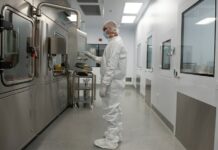It is not always easy to go from novel research to a working business plan. There are still problems with prices and safety, as well as legal issues that make it hard to make cell and gene treatments on a large scale for sale.
The thing that has changed the most for me is that they’ve gone from being a niche science to a business. And we’re going through the growing pains of an industry, says Dr. Anthony Ting, who has worked in cell therapy and regulatory filing for more than twenty years.
Still, more and more cell and gene treatments are coming out on the market. The U.S. Food and Drug Administration (FDA) has cleared 37 cell and gene therapy products1 as of April 2024. Most of these are used to treat cancer. And with seven treatments approved by the FDA in 2023, it was the most ever for cell and gene therapy.2
However, it seems like more progress needs to be made to fully realize the huge potential of these medicines and make sure that more treatments reach patients and the market.
Things to think about when developing cell and gene therapies
Cell and gene treatments have been developed in the past based on study rather than market needs. For these medicines to help the most people, Dr. Ting says that experts should think about how they could be used in businesses early on in the creation process.
He would tell a young worker to think about the endgame first if they met him. What kind of patients do you have? How are you going to make enough goods to help all of those patients? Is it going to be worth the money?
Dr. Ting adds that they have great knowledge, but they need to figure out what to do next. How do they change the way things are made? How do they make things cheaper? How do they get the medicine to the person who needs it? Most of the goods are given out in academic places with a lot of expert knowledge. Not all patients who are eligible for these items are getting them.
Dr. Ting says it’s an exciting time to be in space. But the business is growing and getting more mature. We need to do it better.
Getting around regulation problems with gene and cell therapy
When cell and gene treatments come out on the market, regulators play a very important part. Dr. Ting says that officials are ready to work with people who are making these kinds of medicines in a way that wouldn’t have been possible in the past.
He says that they’ve liked working with regulators in the field of cell and gene therapy because they’ve been easy to talk to and work with. They know this is a new place that is still growing. They also take part a great deal. From the very first meeting I had with the FDA, which was in his office, there was no hostility. Instead, everyone worked together well.
Dr. Ting adds that they have a lot more power. They are hiring more people because they know this is an area that is growing very quickly.
Importantly, once the rules for a treatment are clear, it can be faster for similar cell and gene therapies to get approved. New ways to treat other illnesses are building on what cancer has already done. In December 2023, the FDA let the first gene treatments for sickle cell disease go ahead.3. A lot of hope is also linked to the treatments that are being worked on for inflammatory diseases.
More so, Dr. Ting says that the experience with CAR-Ts will easily be applied to the field of inflammatory diseases. But once more, it’s a different group of patients. And inflammatory diseases come in a lot of different forms. Each group of patients will have its own set of problems.
Taking care of the cost problems in gene and cell treatments
The high prices make it hard to grow the market for cell and gene therapy. Patients can spend up to a million dollars on some gene treatments and hundreds of thousands of dollars on cell therapies. Because of the higher short-term costs, national health care systems can’t always pay for certain treatments. Because of this, compensation is a big problem.
The way we think about price needs to change so that we can help more people who need it. For example, even though a one-time cell therapy might cost more up front, it might be cheaper for patients in the long run than going through a series of regular treatments that could last decades.
The cost of healthcare might change if CAR-T treatments work well and bring in more money. Also, the availability of more treatments for a wider range of diseases could help bring market prices down.
Dr. Ting says that more money has been put into cell and gene treatments because of the success of CAR-T in getting to the market and helping patients.
He also says it’s good that Big Pharma is becoming more involved. They can really push a product to market because they have the means to do so.
Why the market for cell and gene treatment needs to be standardized
There will likely be a big increase in the number of people with blood cancer who are treated with CD19-directed chimeric antigen receptor T cells (CD19 CAR-T) over the next ten years. According to a study by GlobalData, the number of people handled will rise from 3,700 in 2021 to almost 13,500 by 2031.4
To keep up with market demand, production of cell and gene therapies needs to be improved. Standardization is needed to get the most out of cell and gene treatments, but recent successes in this area of biopharma show that it is possible. In terms of how they are made, Dr. Ting compares it to monoclonal antibodies, which are similar to cell and gene treatments in some ways.
Like the monoclonal antibody space, there were a lot of different ways that companies were making monoclonal antibodies at the start, says Dr. Ting. But in the end, they found out how to standardize. There are now two cell phone lines that almost everyone uses.
How data and technology can speed up the production of cell and gene therapies
Many production processes still use slower human methods. Using technology more could help the production of cell and gene therapies even more. Automation not only speeds up production with lower risks of contamination, but digital technology can also handle much larger amounts of data much faster than typing it in by hand. After that, more information can be used to help get governmental permission.
Dr. Ting says that the manufacturing process can be sped up by using robotics and then adding technology. When you compare a computer batch record to a paper batch record, you can save a lot of time and cut down on mistakes.
It’s great how tools for gathering data have grown and improved. That’s what changes everything, says Dr. Ting. We need to now figure out how to gather all of this information. How do we put it in a form that lets us create AI and machine learning algorithms? It’s coming though.
The market for cell and gene treatment has already been changed by new technologies. There are no signs that this trend will slow down.
Overcoming problems has been a key part of making cell and gene treatments possible. As long as things keep going as they are, the market for cell and gene therapy will keep growing, which will help more people in the long run.




















